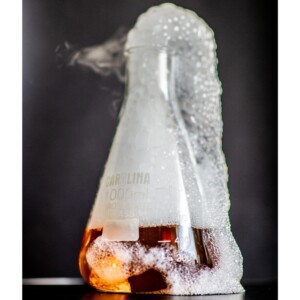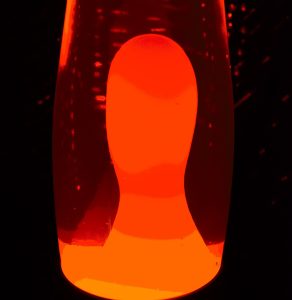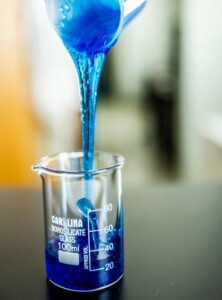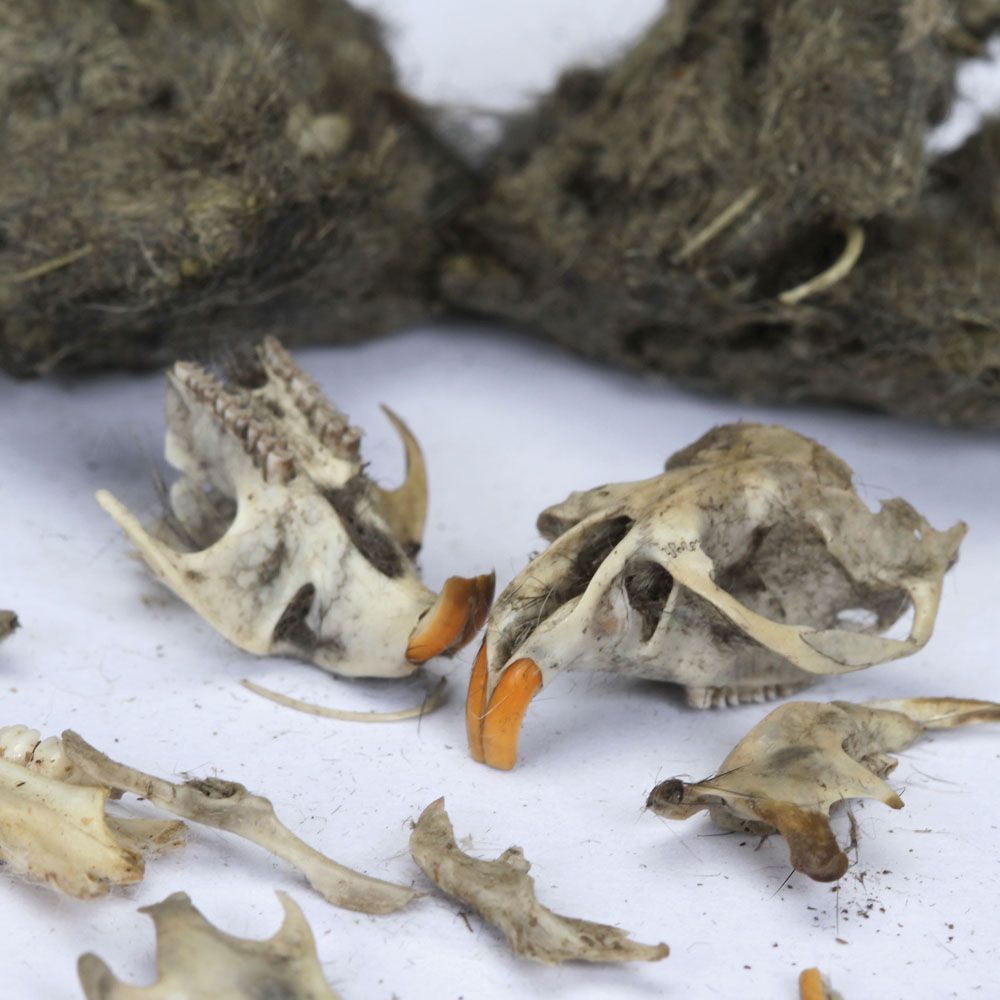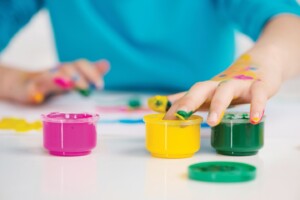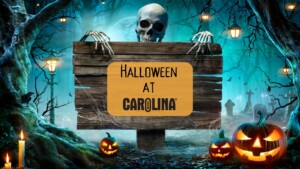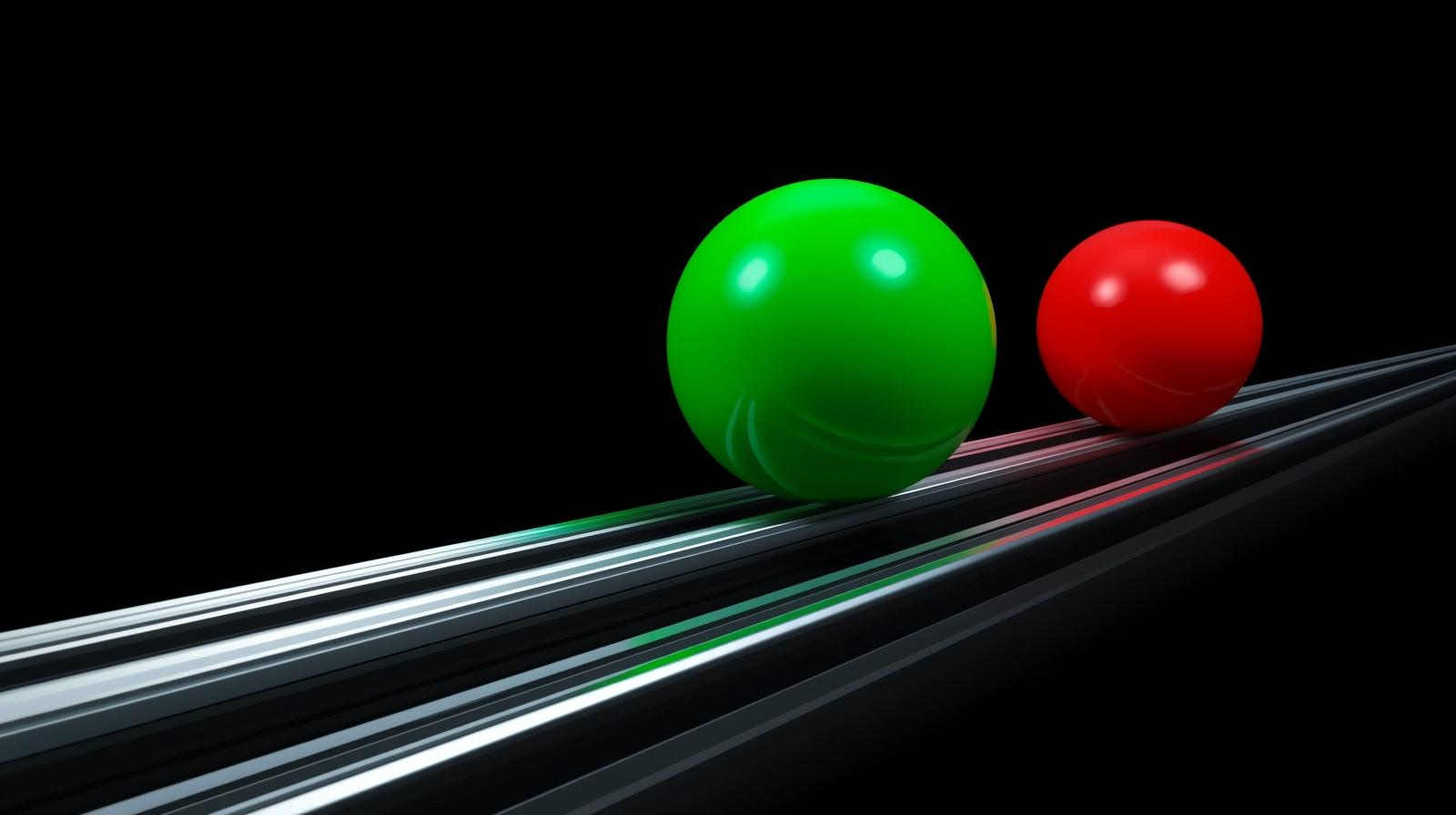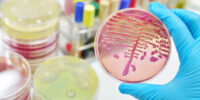Treat your ghosts and ghouls to some spirited demos and hands-on activities, and celebrate Halloween as the finale to your October science explorations.
You can create a memorable learning experience out of this spooktacular holiday with a discussion of chemistry topics such as acid-base chemistry, density, indicators, polymers, properties of matter, and phase changes. Anatomy, owls, bugs, and forensics will help round out an engaging science lesson. Adding a little showmanship to some of these classic science activities will create a celebration that students will not forget.
Don't Take a Holiday From Proper Lab Procedures!
Perform all activities in accordance with established laboratory safety practices, including appropriate personal protective equipment (PPE). Ensure that students understand and adhere to these practices. Know and follow all school district guidelines for the disposal of laboratory wastes. Read the activity-specific cautions below before performing the activities.
Dry ice demonstrations
At standard pressure, dry ice transforms directly from a solid to a gas in a process called sublimation. The foggy effect makes dry ice a favorite for any Halloween celebration.
If possible, purchase the dry ice (which is available at many grocery stores) on the same day you perform the demonstrations. You only need a small amount of dry ice, but you’ll lose some due to sublimation during transport and storage. Purchase about 1 pound of dry ice to allow for loss. Use a foam cooler to transport it to your classroom.
Caution: Dry ice is very cold at —78.4° C (—109° F). Do not allow it to contact bare skin. Store dry ice in a polystyrene foam cooler with a loose-fitting lid to prevent the pressure inside the cooler from increasing to unsafe levels. Never store dry ice in a sealed cooler, refrigerator, or freezer. Carbon dioxide gas is odorless and colorless. Use, store, and transport dry ice only in well-ventilated areas.
Dry ice explosion
Startle your students when a pipet explodes in the classroom due to the pressure increase as dry ice sublimes to gaseous carbon dioxide.
Small pieces of dry ice are sealed in a plastic pipet and submerged in water. The dry ice continues to sublime in the sealed pipet bulb. When the pressure inside surpasses that of the triple point (5.1 atm), at which all 3 phases are in equilibrium, the carbon dioxide begins to melt and then to boil. For a moment, the 3 states of carbon dioxide exist in the bulb. After the bulb bursts, the pressure quickly drops and any remaining liquid or gaseous carbon dioxide in the bulb solidifies.
Foaming rainbow demonstration
With its changing colors and bubbling solution, this demonstration seems like it’s straight out Professor Snape’s Potions Class making it perfect for a Halloween demonstration. You can add to the showmanship of this demonstration by renaming the chemicals used with fun names like “unicorn tears” for Bogen indicator, or refer to the bits of dry ice as “troll’s teeth.”
Puking pumpkin
Use a Jack-o-Lantern or a carved plastic pumpkin from a craft store to add a Halloween spin to this classic chemistry class demonstration “Elephant’s Toothpaste” covering catalysts, exothermic reactions, and decomposition reactions.
In Elephant’s Toothpaste, students observe the decomposition of hydrogen peroxide catalyzed by potassium iodide (or yeast).
The 2-step decomposition reaction:
H2O2(aq) + I—(aq) → H2Ol + OI—(aq) (rate-determining step)
H2O2(aq) + OI—(aq) → H2O(l) + O2(g) + I—(aq)
The rapidly produced oxygen mixes with dish detergent to form foam that overflows the container and shoots out of the jack-o’-lantern. Iodine gives the foam a brown tint. Food coloring may be added to produce any shade you like. This demonstration can be messy, so be sure to protect the lab bench and floor with newspaper before beginning.
If you or a student is iodine sensitive, an alternate method is to use yeast for the catalyst. In a small cup, mix 1 packet of yeast with 3 tablespoons of warm water. After mixing, allow 5 min for the yeast to activate before use. Substitute the yeast solution for the saturated KI solution during the demo.
To reuse the jack-o’-lantern for multiple classes, rinse it with water and pat the inside dry with paper towels.
Lava lamp
Everyone knows the saying “Oil and water don’t mix.” Here is a dramatic demonstration of it. An effervescent tablet reacts with colored-water blobs in a bottle of oil to make tiny bubbles of carbon dioxide gas. These bubbles attach themselves to the water blobs and cause them to float to the surface because carbon dioxide gas is less dense than water and oil. When the water-gas blobs reach the surface, the bubbles expand and pop, allowing the denser water blob to sink back to the bottom, emulating a lava lamp. Use this activity to cover the topics of density, intermolecular forces, and chemical reactions.
Oozing Slime
No Chemoween is complete without slime, a non-Newtonian fluid with interesting characteristics:
Under stress it dilates or expands.
Pull on it gently (low stress) and it flows and stretches, sometimes even forming a thin film.
Pull on it sharply (high stress) and it breaks.
Hit it with your hand and it doesn’t splash or splatter.
- Stuff it through a tube and it appears to swell as it exits the other end.
Use this student favorite to cover the topics of polymers and properties of matter.
Owl Pellet Dissection
If you’re looking to include some life science topics in your Halloween celebration, look no further than owl pellets. Owl pellets are masses of undigested parts of food that owls occasionally regurgitate. The contents of the owl pellet depends on its diet, but can include the exoskeleton of insects, indigestible plant matter, bones, fur, feathers, bills, claws, and teeth. Dissecting the tightly compacted pellet reveals the owl’s most recent meal and can be used to cover topics such as food webs, and the transfer of energy and mass.
Maggot Art
It wouldn’t be Halloween without maggots. Use some “Halloween colors” for the finger paints so your students can take home their maggot art to share with their families. This activity covers the topics of animal behavior, structure and function, and the complete metamorphosis life cycle.
Forensic blood evidence
Have students assume the role of a crime scene investigator for these investigations involving blood evidence analysis.
Solve a forensic mystery by performing tests on simulated samples to determine if a stain is blood then determining the blood type of that evidence. Learn about blood typing.
Students measure simulated blood stains to determine the angle of incidence to piece together part of the crime scene in these activities which focus on math and physics concepts. You can do this pen and paper activity for a quick introduction to the topic. The Bloodstain Pattern Analysis Kit includes wall decals for a more realistic activity.


